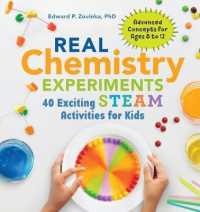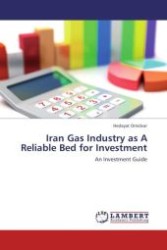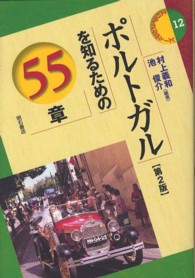- ホーム
- > 洋書
- > 英文書
- > History / World
Full Description
Bringing together a wide array of modern scientific techniques and interdisciplinary approaches, this book provides an accessible guide to the methods that form the current bedrock of research into Roman, and more broadly ancient, wine. Chapters are arranged into thematic sections, covering biomolecular archaeology and chemical analysis, archaeobotany and palynology, vineyard and landscape archaeology and computational and experimental archaeology. These include discussions of some of the most recent techniques, such as ancient DNA and organic residue analyses, geophysical prospection, multispectral imaging and spatial and climatic modelling. While most of the content is of direct relevance to the Roman Mediterranean, the assortment of detailed case studies, methodological outlines and broader 'state of the field' reflections is of equal use to researchers working across disparate disciplines, geographies, and chronologies.
The study of ancient Roman wine has been dominated until recently by traditional archaeological analyses focused upon production facilities and ceramic evidence related to transport. While such architecture and artefact-focussed approaches provide a fundamental foundation for our understanding of this topic, they fail to provide the requisite nuance to answer other questions regarding grape cultivation and wine production, consumption, use and trade. As the first compendium of its kind, this book supports the embedding of modern scientific and experimental techniques into archaeological fieldwork, research and laboratory analysis, pushing the boundaries of what questions can be explored, and serving as a launching point for future avenues of interdisciplinary research.
Contents
List of Figures
List of Tables
List of Contributors
Acknowledgements
List of Abbreviations
1. Scientific Approaches to Ancient Wine: Developments, Challenges, and Future Perspectives, Emlyn Dodd (Institute of Classical Studies, University of London, UK/British School at Rome, Italy), and Dimitri Van Limbergen (Ghent University, Belgium)
2. Ancient Viniculture: A Multidisciplinary Holistic Perspective, Patrick E. McGovern (University of Pennsylvania, USA)
3. Approaching Palaeo-terroir: Thoughts on How to Study the Geography of Wine in the Roman World, Dimitri Van Limbergen (Ghent University, Belgium) and Pieter Gurdebeke (Ghent University, Belgium)
Part I. Biomolecular Archaeology and Chemical Analysis
4. Archaeology and Grape aDNA, Andrea Zifferero (University of Siena, Italy)
5. Wine Production, Trade, and Consumption in the Roman World: The Potential of Organic Residue Analysis, Alessandra Pecci (University of Barcelona, Spain)
6. A Case Study in the Importance of Residue Analysis for the Interpretation of the Estate Economy: The Villa of Santa Marina (Istria, Croatia), Corinne Rousse (Aix-Marseille University, France), Nicolas Garnier (Independent Scholar), Gaetano Bencic (Independent Scholar) and Davor Munda (Independent Scholar)
Part II. Archaeobotany and Palynology
7. Archaeobotany in the Archaeology of Wine: Current Approaches and Future Possibilites, Patrizia Basso (University of Verona, Italy) and Diana Dobreva (University of Verona, Italy)
8. Applicability and Use of Archaeobotany for the Study of Vine Cultivation and Winemaking in the Roman Period, Marco Marchesini (Independent Scholar), Silvia Marvelli (C.A.A. Giorgio Nicoli, Italy), Anna Chiara Muscogiuri (C.A.A. Giorgio Nicoli, Italy) and Elisabetta Rizzoli (C.A.A. Giorgio Nicoli, Italy)
9. Grapevines Under the Lens: A Methodological Approach to the Study of Seed Assemblage from Villamagna (Urbisaglia, Marche, Italy), Riccardo Carmenati (University of Macerata, Italy), Francesco Breglia (University of Salento, Italy) Roberto Perna (University of Macerata, Italy) and Girolamo Fiorentino (University of Salento, Italy)
10. Roman Viticulture from Palynology: A Review and New Data in the British Isles, Antony G. Brown (University of Southampton, UK), Ian Meadows (Independent Scholar) and Simon D. Turner (University College London, UK)
Part III. Vineyard and Landscape Archaeology
11. Studying Roman Viticulture in Baetica with GIS Modelling and Geophysical Survey, Pedro Trapero Fernández (University of Cádiz, Spain), Isabel Rondán Sevilla (University of Cádiz, Spain) and Lázaro Lagóstena Barrios (Univeristy of Cádiz, Spain)
12. New High-Resolution Approaches for Vineyard Archaeology: Evidence from the Region of Pompeii, Florian Seiler (German Archaeological Institute, Berlin)
13. Employing Remote Sensing and Multispectral Satellite Data to Measure the Extent of Grapevine and Olive Vegetation: A Case Study in the Landscape of Western Rough Cilicia, Turkey, Christopher D. Dore (University of Arizona, USA) and Nicholas K. Rauh (Purdue University, USA)
Part IV. Modelling and Experimental Archaeology
14. Quantifying Roman Wine Production: New Approaches to Vineyard Sizes and Wine Yields in the Ager Barcinonensis, Antoni Martín i Oliveras (University of Barcelona, Spain)
15. Reconstructing Vineyard Geography, Yields and the Profitability of Wine Production in the Roman Empire: New Insights from Spatial-Analysis, and Agent-Based and Climate-Vegetation Modelling, Nicolas Bernigaud (Independent Scholar), Alberte Bondeau (Aix-Marseille University, France), Joël Guiot (Aix-Marseille University, France), Laurent Bouby (Institute of Evolutionary Science of Montpellier, France), Frédérique Bertoncello ( University Côte d'Azur, France) and Marie-Jeanne Ouriachi (University of Côte d'Azur, France)
16. Modelling Viticulture in the Adriatic Region: A Quantification of Agricultural Suitability, Andrew McLean (University of Edinburgh, UK)
17. Linking Experimental Archaeology and Winemaking: From the Dig to the Winery, Mkrtich Harutyunyan (University of Lisbon, Portugal), Manuel Malfeito Ferreira (Univeristy of Lisbon, Portugal) and Mario Indelicato (University of Catania, Italy)
Notes
Index
Bibliography








